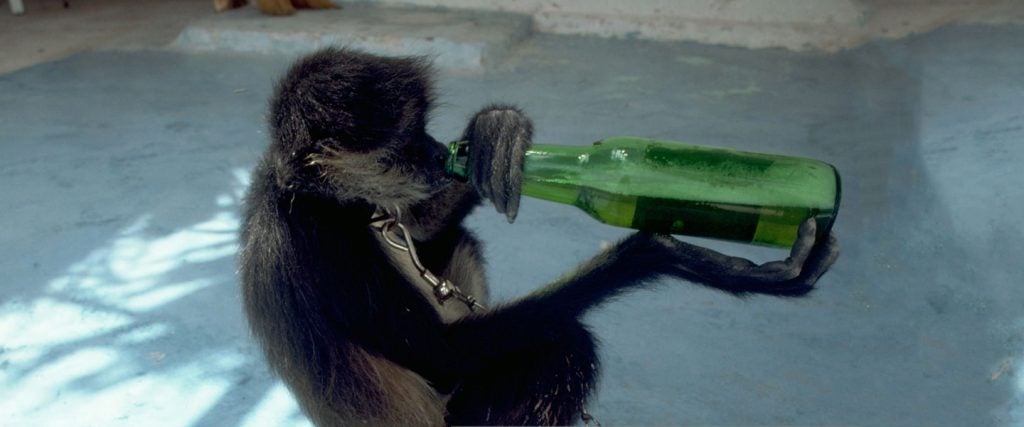Last summer, a video of a monkey in central India went viral after it broke into a liquor store and proceeded to chug a bottle of booze like it was their 21st birthday. Along those lines, there are a number of YouTube videos of various monkeys getting drunk — proving they’re clearly the party boys of the jungle.
And according to new research, this has nothing to do with human influence: Monkeys in the wild constantly get wasted on their own. “For the first time, we have been able to show, without a shadow of a doubt, that wild primates, with no human interference, consume fruit-containing ethanol,” said primatologist Christina Campbell of California State University, Northridge, in a press release. The study follows up on the work of University of California, Berkeley biologist Robert Dudley, who published “The Drunken Monkey Hypothesis” in 2000 and was involved in the recent experiment. The theory originally proposed that “patterns of alcohol use by humans in contemporary environments may thus reflect a maladaptive co-option of ancestral nutritional strategies.”
In other words, we may have inherited our taste for Long Island Iced Teas from wild animals. In his book, The Drunken Monkey: Why We Drink and Abuse Alcohol, Dudley notes that primates are known to eat naturally fermented fruits with an alcohol content of up to 7 percent. However, Campbell’s work is the first to observe monkeys eating their boozy fruits and to test their urine for alcohol.
To do this, Campbell and graduate student Victoria Weaver followed black-handed spider monkeys in Panama for four months, observing and testing the fruit they consumed. Campbell and Weaver showed that spider monkeys preferred fruit that had an alcohol concentration of around 1 to 2 percent by volume — enough to show up in their pee. “[The study] is a direct test of the drunken monkey hypothesis,” Dudley added in the press release. “Part one, there is ethanol in the food they’re eating, and they’re eating a lot of fruit. Then, part two, they’re actually metabolizing alcohol — secondary metabolites, ethyl glucuronide and ethyl sulfate are coming out in the urine.”
To put that in perspective, 1 to 2 percent alcohol by volume is less than a beer, but more than a kombucha and hopefully enough for a tiny monkey to catch a buzz. But unfortunately Dudley cannot confirm or deny if these monkeys are getting sauced. “What we don’t know is how much of it they’re eating and what the effects are behaviorally and physiologically,” he said.
As for why monkeys would develop a taste for alcohol beyond getting drunk, the researchers suspect they’re into it for the extra calories to convert into energy, but the “psychoactive and hedonic effects of ethanol may similarly result in increased consumption rates and caloric gain,” they wrote in the study. Consequently, “contemporary patterns of alcohol consumption, in turn, may derive from these ancestral associations between ethanol and nutritional reward.”
If this is the case, binge drinking and alcohol abuse may be better understood as a “disease of nutritional excess” similar to diabetes and obesity, Campbell and her colleagues suggest, which could be helpful for treating addiction. But before you blame monkeys for being overserved, we’ll need to wait on a bit more research.
For now, you might want to hold off on giving a monkey your car keys.

